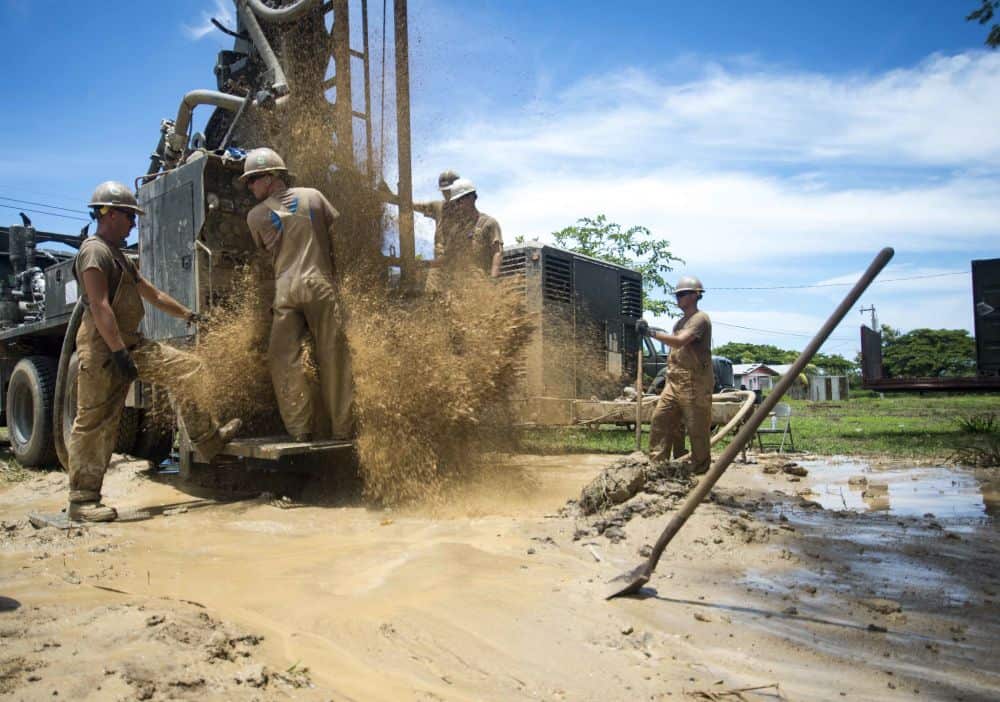
[Image above] Drilling mud plays an essential role in borehole drilling operations. Researchers in France developed a model to better understand how the rheological properties of bentonite-based drilling mud may change when mixed with excavated soil materials. Credit: Official U.S. Navy Page, Flickr (CC BY 2.0)
When discussing the use of ceramics in machining processes, we often focus on hard nonoxides such as tungsten carbide that make up the cutting tools. However, traditional oxides, namely bentonite, play an important (and perhaps surprising) ancillary role in borehole drilling operations—as a major component in drilling muds.
Drilling muds are mixtures of natural and synthetic chemical compounds that aid in borehole drilling operations by cooling and lubricating the drill bit, keeping cuttings suspended for transport, and consolidating the bore walls through hydrostatic pressure and cake formation.
Bentonite, an absorbent swelling clay consisting mostly of montmorillonite, is the primary clay used in drilling muds. When stirred into water, it demonstrates desirable thixotropic behavior, whereby it acts as a fluid when mechanically stressed yet hardens in static conditions (i.e., when dried, it forms a firm sludge cake on the bore wall, providing additional stability).
Obtaining the desired consistency of bentonite-based drilling muds depends on many parameters, and researchers have proposed several phenomenological models to help achieve the desired rheological behavior. However, during actual drilling operations, bentonite mud mixes with excavated soil materials, which may drastically affect the mud’s rheological properties.
Understanding these possible effects is essential to maximizing bentonite mud’s field performance. In a recent paper, researchers from Aix-Marseille Université and Université Le Havre Normandie in France explored how the addition of two other common clays—kaolin and illite—could affect rheological properties.
They created both mono-clay (bentonite, kaolin, and illite) and binary-clay (bentonite-kaolin and bentonite-illite) suspensions by mixing the clays with tap water. They then performed rheological measurements on the suspensions using a rotational rheometer equipped with coaxial cylinders, for which both total clay volume fraction and bentonite-to-clay volume ratio were varied independently.
Rheological measurements on the mono-clay suspensions revealed that Spearman’s model (2017) described fairly well the dependency of yield stress on a wide range of total clay volume fractions.
However, for the binary-clay suspensions, the researchers investigated the influence of total clay volume fraction and bentonite-to-clay volume ratio on rheology independently. They then used this knowledge to develop a phenomenological model that accounts for both values when predicting yield stress—which should prove useful in predicting real-world performance of bentonite muds during operation.
The paper, published in Applied Clay Science, is “Quantifying the yield stress of bentonite muds mixed with other clays during drilling operations” (DOI: 10.1016/j.clay.2022.106593).
